
Which Social Media Platform Should You Use (2023 Edition)

Get helpful updates in your inbox
Digital communities have changed dramatically over the years. The rise and fall of new social media platforms and online forums have resulted in nearly every demographic, every niche group, and virtually every possible topic of civil discourse having representation somewhere online.
Naturally, these groups tend to stick together, in online communities where it’s easiest to foster growth, communication, and bonding. Some social media platforms are better than others for each group; knowing where to find your people is crucial if you want to have a meaningful membership of that group.
As analytics agency Demand Sage recently reported, over 4.9 billion people are accessing social media worldwide, with the average social media user hopping between 6 to 7 social media every month(!). As a publisher, if you are not using social media to meaningfully connect with your people, you’re severely limiting your reach and your ability to grow.
Regardless of what industry you’re in or what type of content you create, social media has become an indispensable tool for bloggers and content creators to reach wider audiences and establish their online presence. With countless platforms available, each offering unique features and targeting diverse user bases, it can be overwhelming to determine which social media site aligns best with your site’s topic, niche, content style, and message.
This comprehensive guide aims to help bloggers and content creators make informed decisions about the social media platforms they should use to effectively grow and build an audience.
The importance of selecting the right social media platform cannot be overstated. It is crucial to choose a platform that not only resonates with your content but also offers the potential for organic growth and engagement from your target audience. By strategically selecting the most suitable platform, you can increase your chances of success, boost your online visibility, and ultimately achieve your blogging and content creation goals.
When evaluating social media platforms, consider your site’s topic or niche. Different platforms cater to specific interests and demographics, so it is essential to choose a platform that aligns with your content’s subject matter. For instance, if you are a fashion blogger, platforms like Instagram and Pinterest, with their visual-centric nature, may be more suitable for showcasing your style and creations than a text-centric platform. On the other hand, if you focus on providing in-depth analysis or thought-provoking content, platforms such as Twitter or LinkedIn, with their emphasis on concise and professional communication, might be a better fit.
Another crucial factor to consider is your content style and message. Each social media platform has its own unique format, features, and user behavior. For bloggers and content creators, understanding how to adapt and optimize your content for specific platforms is vital. For example, if your content relies heavily on visual storytelling, platforms like YouTube, Instagram, or TikTok can serve as effective channels to engage your audience. If you prefer written content or longer-form discussions, platforms like Medium or LinkedIn Articles may better suit your needs and reach your audience better.
Additionally, it’s important to assess the potential for audience growth and engagement on each platform. Analyze the user demographics, engagement metrics, and reach of the platform to ensure it aligns with your target audience. Some platforms may have a larger user base but might be oversaturated with content, making it harder to stand out. In contrast, smaller, niche-oriented platforms may offer a more focused audience but may require more effort to build a following. Also the quality of a follower is important: better to have 500 engaged subscribers than 5000 followers who never engage with your work.
Ultimately, the decision of which social media platform to use should be based on a thorough understanding of your content, target audience, and growth objectives. By conducting research, experimenting with different platforms, and monitoring the results, you can determine the ideal social media mix to amplify your online presence, engage your audience, and drive traffic to your site.
But which social media channel should you use? Doesn’t it take forever to build an audience on these platforms? How can I possibly match my competitor’s efforts, who have a much bigger following than me? Once I pick the right social media channel, how long does it take to actually see growth?
That’s why we wrote this article: to help bloggers, content creators, website owners, and digital publishers of every kind discover which social media platform is right for you. We’ll explore the most popular social media platforms in detail, examining their key features, target audience, content formats, and best practices for success. Whether you are a seasoned blogger or a budding content creator, this guide will equip you with the knowledge and insights necessary to make informed decisions and build a thriving online community.
There are countless social media platforms, so for this article we’ll be focusing on seven of the biggest ones out there in terms of user base and potential for audience growth:
- TikTok
- YouTube
Let’s begin.

Facebook remains one of the most widely used social media platforms globally, offering a diverse user base and extensive targeting options for advertisers. Here’s why content creators from different industries might consider Facebook:
Why You Should Use Facebook
Vast User Base: With over 2.85 billion monthly active users (over a third of the world has made a Facebook profile!), Facebook provides an opportunity to reach a broad audience, making it suitable for bloggers and content creators targeting a wide range of demographics. Whether you are a fashion influencer, a food blogger, or a tech enthusiast, chances are your target audience can be found on Facebook.
Robust Advertising Tools: Facebook’s advanced ad targeting capabilities enable content creators to reach specific segments of their audience based on demographics, interests, and behaviors. This can be particularly beneficial for businesses aiming to reach niche markets. With Facebook Ads, you can tailor your promotional messages to reach the right people at the right time, increasing the chances of audience engagement and conversion.
Community Building: Facebook Groups allow content creators to foster a sense of community among their audience, encouraging discussions, and establishing brand loyalty. By creating and managing a Facebook Group centered around your niche or industry, you can connect with your audience on a deeper level, address their concerns, and share valuable insights. This not only helps in building a loyal following but also provides an avenue for valuable user-generated content.
Some Relevant Data Points:
- 74% of Facebook users log in daily, providing consistent engagement opportunities.
- Facebook users spend an average of 34 minutes per day on the platform, increasing the likelihood of content consumption.
- 39% of Facebook users follow business pages, indicating the potential for audience growth.
- The average engagement rate for Facebook posts is 0.16%, higher than other platforms like Instagram and Twitter.
Why You Shouldn’t Use Facebook
While Facebook can be a valuable platform for reaching a wide audience and driving traffic to your website, it does come with certain drawbacks and cons that you should consider. Here are some potential drawbacks of using Facebook as a platform for growing your online audience:
Declining Organic Reach: Over the years, Facebook has made significant changes to its algorithm, resulting in decreased organic reach for business pages. This means that even if you have a large number of followers, your content may not reach all of them unless you pay for advertising or boosted posts. As a result, building an organic audience and getting consistent traffic to your website can be challenging.
High Competition: Facebook is a crowded platform with millions of users and businesses vying for attention. The high competition makes it difficult to stand out and gain visibility, especially for new or small bloggers. You’ll need to invest time and effort in creating compelling content and engaging with your audience to build a loyal following.
Limited Control and Ownership: When you build your audience on Facebook, you are essentially building on rented land. You have limited control over the platform’s policies, algorithms, and layout, which can change at any time. Facebook owns the data and controls the user experience, which means you are dependent on their platform to reach your audience. Relying solely on Facebook for audience growth puts you at the mercy of their decisions.
Privacy Concerns: Facebook has faced several privacy controversies in the past, which may make some users hesitant to engage with your content. This could impact the trust and credibility you’re trying to establish with your audience. Additionally, Facebook collects user data and uses it for targeted advertising, which may lead to concerns about privacy and data security.
Ad Costs: While Facebook offers robust advertising options, the cost of running effective ad campaigns can be significant. Depending on your target audience and niche, you may need to allocate a budget for paid promotions to reach a wider audience. This can be challenging, especially for bloggers with limited financial resources.
Platform Fatigue: Some users are becoming fatigued with social media platforms like Facebook, and they may be less inclined to actively engage with content or follow external links. As a blogger, you’ll need to find creative ways to grab and maintain their attention amidst the constant stream of posts, videos, and ads.
Facebook still remains one of the largest social media platforms with immense potential for audience reach. It’s essential to carefully plan your Facebook strategy, utilize other channels for audience growth, and consider diversifying your traffic sources to mitigate the risks associated with relying solely on one platform.
Twitter is a microblogging platform known for its real-time updates and concise content format, and has recently experienced quite an upheaval after being purchased by Elon Musk, undergoing massive changes, and receiving a new CEO mere weeks ago. Here’s why content creators might choose Twitter for audience building:
Timely and Trending Content: Twitter’s fast-paced nature allows content creators to engage with trending topics, breaking news, and industry conversations, making it ideal for bloggers and journalists. By staying active on Twitter and participating in relevant discussions, you can position yourself as an authority figure in your niche and attract followers who value real-time information and insights.
Reach Influencers and Thought Leaders: Twitter facilitates direct interactions with influencers and industry experts, enabling content creators to build relationships, gain insights, and expand their network. By engaging with influential figures through retweets, replies, and mentions, you can leverage their audience and increase your own visibility.
Hashtag and Trending Topics: Utilizing relevant hashtags and participating in trending conversations can increase visibility and help content creators reach a wider audience. By incorporating popular hashtags into your tweets, you can join larger conversations and tap into existing communities interested in your field. This can lead to increased exposure, followers, and engagement.
Some Relevant Data Points:
- Twitter users send approximately 500 million tweets per day, creating a constant stream of content and conversation.
- 42% of Twitter users follow brands, presenting opportunities for content creators to connect with their target audience.
- Tweets with images receive 150% more retweets, emphasizing the importance of visual content.
- 71% of Twitter users say they use the platform for news, making it a valuable resource for content creators in industries such as journalism, politics, and current affairs.
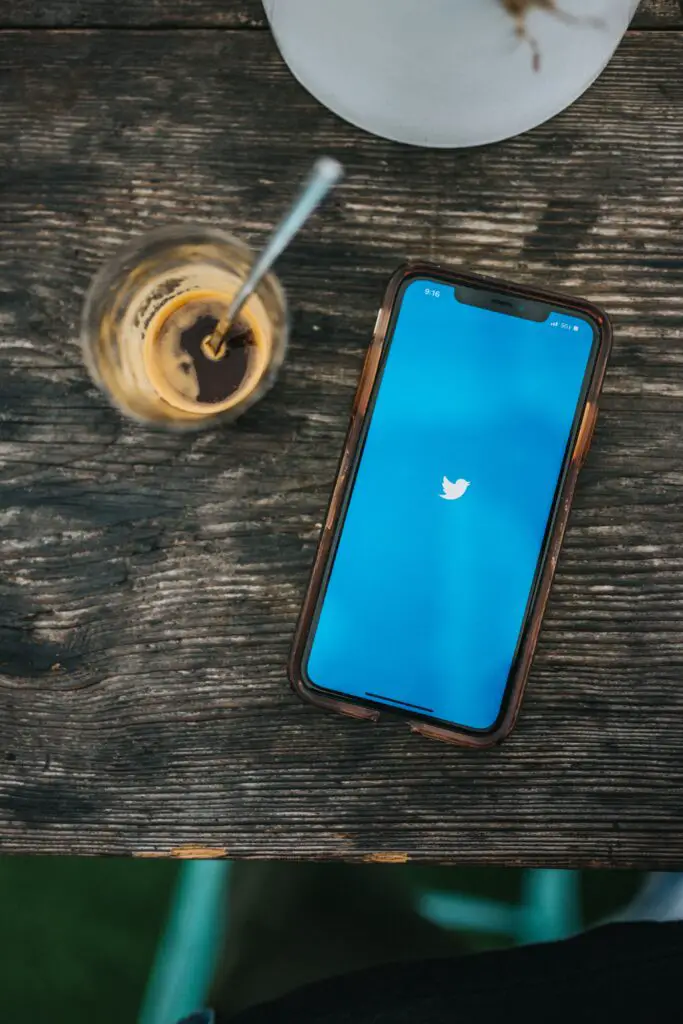
Why You Shouldn’t Use Twitter
Using Twitter as a platform to grow your online audience and drive traffic to your website can be beneficial, but it also has certain drawbacks and cons to consider. Here are some potential drawbacks of using Twitter for audience growth:
Fast-paced and Transient Nature: Twitter is known for its fast-paced and transient nature, with tweets moving quickly through users’ feeds. This means that your tweets have a short lifespan, and it can be challenging to get sustained attention for your content. Building a loyal and engaged audience requires consistent effort and frequent posting to stay on their radar.
Information Overload: 500 million tweets a day is a lot! Twitter is a platform where users are bombarded with a vast amount of information from various sources. It can be difficult to stand out among the noise and capture users’ attention. Your tweets may easily get buried in users’ feeds, and it takes careful timing and compelling content to catch their eye and drive traffic to your website.
Lack of Control over Platform Changes: Twitter regularly introduces updates and changes to its platform, including algorithmic adjustments and new features (there were countless obstacles Twitter users experienced when Musk purchased Twitter and began changing the platform overnight). These changes can impact the visibility of your tweets and the overall user experience. As a blogger, you have limited control over these changes and need to adapt your strategies accordingly.
Trolls and Negative Interactions: Twitter is known for its fast and often heated discussions, which can lead to negative interactions or encounters with trolls. As a blogger, you may encounter criticism, online harassment, or unconstructive comments that can affect your motivation and confidence. Building a positive and supportive community on Twitter can require active moderation and careful engagement.
Twitter can still be a valuable platform for building an audience and driving traffic to your website, particularly for bloggers who excel at concise and engaging content. It’s important to understand your target audience on Twitter, leverage relevant hashtags, engage with others in your niche, and maintain an active presence to make the most of the platform’s potential.
YouTube
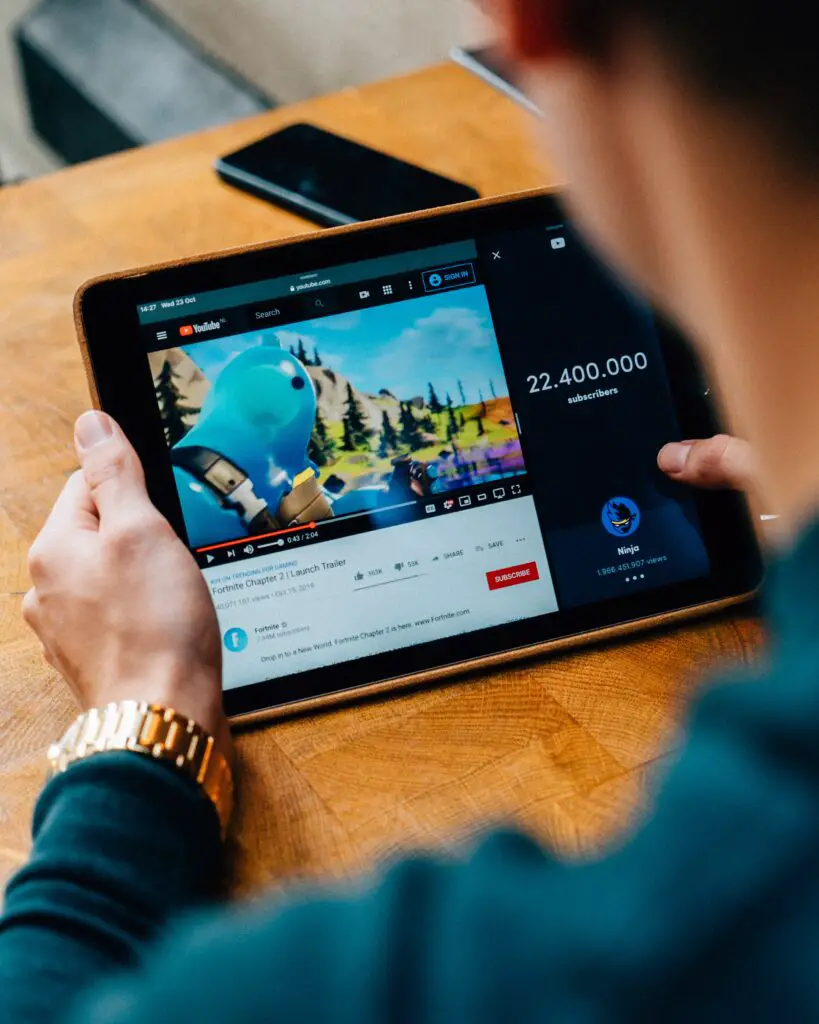
YouTube is a video-sharing platform with billions of monthly active users, making it a go-to choice for content creators specializing in video-based content. Here’s why YouTube might be the platform for you:
Video Content Dominance: With over 2 billion logged-in monthly users, YouTube provides a vast audience specifically interested in video content, making it ideal for vloggers, tutorial creators, and those aiming to showcase visual content. Whether you are a beauty guru, a gaming streamer, or a fitness expert, YouTube offers the infrastructure and discoverability to grow your audience through engaging videos.
AI-Created Content: In this new internet age and the advent of AI, YouTubers no longer need expensive studio equipment (or even a camera!) to create high-quality and relevant videos based on their content. Generative AI continues to make leaps and bounds seemingly every week, and users are more able than ever to quickly generate videos to their followers (you don’t even have to show your face).
Monetization Opportunities: YouTube’s Partner Program allows content creators to monetize their videos through advertising, channel memberships, and merchandise shelf integration, providing revenue potential. By consistently creating high-quality content and building a loyal subscriber base, you can generate income from your YouTube channel.
Long-Lasting Content: YouTube videos have an evergreen quality, meaning they can continue to generate views and engagement long after their initial publication date. Unlike other platforms where content can quickly get buried in feeds, YouTube’s search and recommendation algorithms give content creators the opportunity for their videos to gain traction over time, attracting new viewers and subscribers.
Some Relevant Data Points:
- YouTube reaches more 18–49-year-olds in the U.S. than any cable network, highlighting its significant potential for audience reach.
- The number of YouTube channels earning six figures per year has grown by 40% year-over-year.
- YouTube’s mobile app has the highest reach and viewing time compared to other social media platforms.
- Users watch more than 1 billion hours of video on YouTube every day, showcasing the platform’s immense content consumption potential.
Why You Shouldn’t Use YouTube
Using YouTube as a platform to grow your online audience and drive traffic to your website can be a great strategy, but it also has certain drawbacks and cons to consider. Here are some potential drawbacks of using YouTube for audience growth:
Competition and Discoverability: YouTube has a massive user base, and it’s a highly competitive platform. It can be challenging to stand out among the millions of videos and gain visibility, especially if you’re in a popular niche. Discoverability depends on factors like SEO optimization, video quality, engagement metrics, and consistency. Building an audience on YouTube requires strategic planning and continuous effort.
Monetization Requirements: If your goal is to monetize your YouTube channel through the YouTube Partner Program (YPP), you need to meet specific requirements, such as having at least 1,000 subscribers and 4,000 watch hours in the past 12 months. Meeting these requirements can take time and effort, and until then, you won’t be able to generate direct revenue from your YouTube channel.
Limited Control over Monetization: Even after meeting the monetization requirements, YouTube’s monetization policies and algorithms determine which ads are shown on your videos. You have limited control over the types of ads and their placement, which may not always align with your content or brand. Additionally, changes in YouTube’s policies or demonetization of certain types of content can impact your revenue stream.
Dependency on Platform: When you build an audience on YouTube, you’re dependent on the platform for reaching and engaging with your viewers. YouTube has its own algorithms, policies, and guidelines that can change over time. Relying solely on YouTube for audience growth and traffic means you’re subject to those changes, which can affect your reach and visibility.
Limited Traffic to External Websites: While YouTube can be effective in building an audience within the platform, it may not always drive significant traffic to external websites, such as your blog. YouTube aims to keep users on the platform, so the emphasis is on increasing watch time and engagement within YouTube itself. Encouraging viewers to visit your website or blog requires compelling calls-to-action within your videos and video descriptions.
YouTube remains one of the largest video platforms with vast potential for audience growth and engagement. It’s important to develop a content strategy that aligns with your target audience, create high-quality videos, engage with your viewers, and diversify your traffic sources to maximize the benefits of using YouTube for audience growth and website traffic.
TikTok
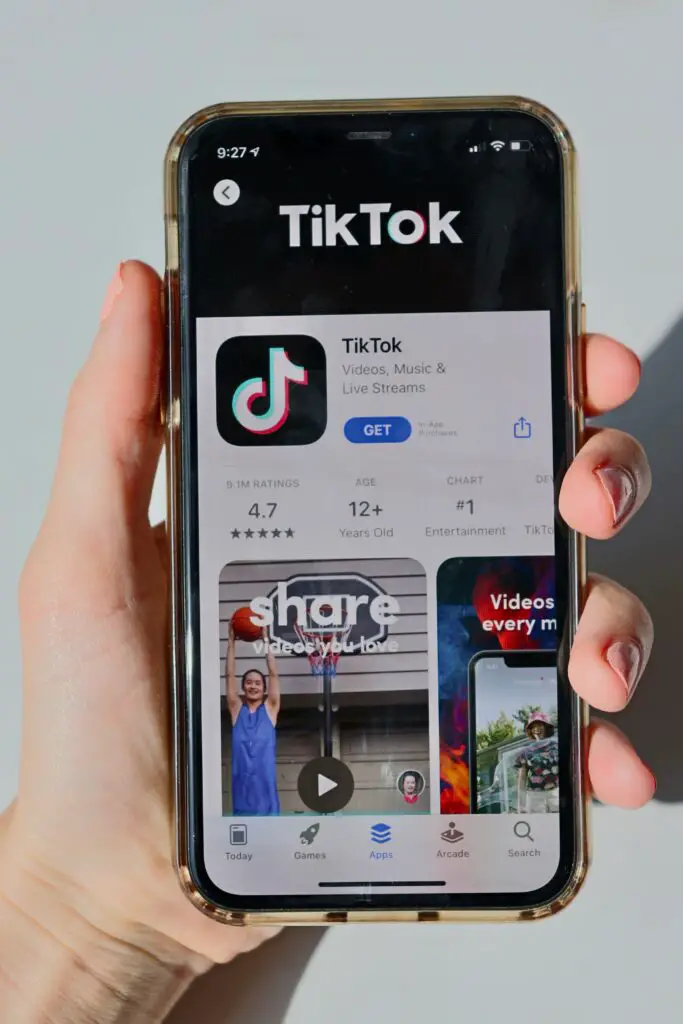
Ah, TikTok. With the recent concerns that the app may soon be completely banned in America, it’s become as volatile as it is popular.
TikTok is a short-form video platform that has gained immense popularity, especially among younger audiences. Here’s why content creators might consider TikTok for audience building:
Viral Potential: TikTok’s algorithm is designed to promote content that resonates with its user base. This means that even users with a small following can experience viral growth if their content captures the attention of TikTok’s algorithm and the broader TikTok community. For content creators aiming to build an audience quickly, TikTok offers a unique opportunity.
Creative Expression: TikTok’s emphasis on short videos and creative editing tools allows content creators to showcase their unique style and creativity. This is particularly appealing to artists, dancers, comedians, and others who can leverage visual storytelling and engaging content formats to captivate their audience.
Niche Communities: TikTok’s “For You” page, which displays personalized content recommendations, helps content creators reach niche communities interested in specific topics or industries. By using relevant hashtags and participating in trending challenges, content creators can connect with like-minded individuals and grow their audience within their niche.
Some Relevant Data Points:
- TikTok has over 1 billion monthly active users, with a significant portion belonging to the younger demographic.
- The average TikTok user spends around 52 minutes per day on the app, indicating high engagement levels.
- TikTok videos with hashtags have higher engagement rates than those without hashtags.
- The TikTok algorithm is designed to promote a diverse range of content, providing equal opportunities for both established creators and newcomers.
Why You Shouldn’t Use TikTok
Using TikTok as a platform to grow your online audience and drive traffic to your website can have its benefits, but it also has certain drawbacks and cons to consider. Here are some potential drawbacks of using TikTok for audience growth:
Short Video Format: TikTok is known for its short video format, with most videos being between 15 seconds to three minutes long (although can upload longer videos up to ten minutes). If your blog content requires more in-depth explanations or doesn’t lend itself well to quick, visually engaging videos, it can be challenging to effectively convey your message within the platform’s limitations.
Algorithm and Discoverability: TikTok’s algorithm determines the visibility and reach of your videos. While the algorithm aims to show relevant content to users, it can be unpredictable and difficult to fully understand. Gaining initial traction and reaching a wider audience on TikTok can be challenging, especially for new accounts or bloggers who are starting from scratch.
High Competition: TikTok has a vast and active user base, which means there is significant competition for attention and engagement. Standing out among millions of videos can be challenging, especially in popular niches. It may take time and experimentation to find the right content approach and gain momentum on the platform.
Limited External Link Placement: TikTok restricts the placement of external links within videos. In general, only accounts with over 10,000 followers can add clickable links to their profile bio (accounts with over 10,000 followers can place links in their TikTok videos). This limitation can make it difficult to drive traffic directly to your website from individual TikTok videos. You’ll need to rely on alternative methods such as directing users to visit your profile for links or utilizing video descriptions to provide website URLs.
Younger User Base: TikTok’s user base skews younger, with a significant portion of users falling in the age range of 16–24. If your target audience is older or not well-represented on TikTok, it may be challenging to reach and engage with your desired demographic. Understanding your target audience and their preferences is essential for effectively utilizing TikTok as a platform for audience growth.
Limited Content Control: Once you upload a video on TikTok, you have limited control over its distribution and usage. Your content can be shared, remixed, or repurposed by other TikTok users, potentially impacting your ability to maintain control over your brand and message. It’s important to consider this aspect and be prepared for the possibility of your content being shared and adapted by others.
TikTok offers a highly engaged and active user base, presenting opportunities to build an audience and drive traffic to your website. By understanding TikTok’s unique format, utilizing trending challenges and hashtags, engaging with the community, and incorporating storytelling and creativity into your videos, you can leverage the platform’s potential to grow your online audience and direct traffic to your website.
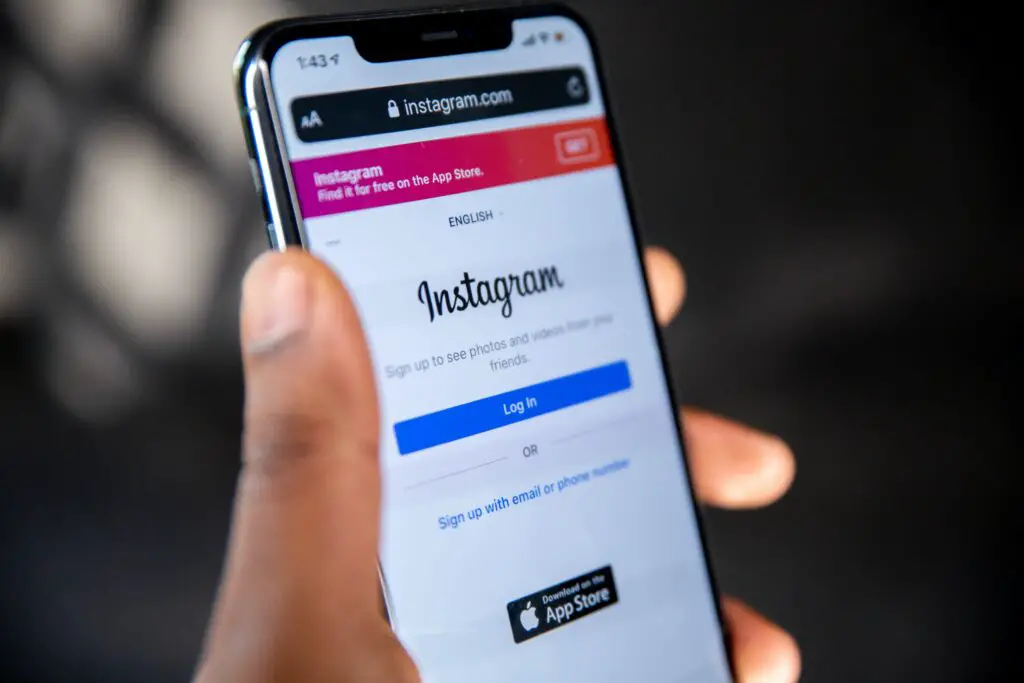
Instagram: Instagram is a visual-centric platform that enables content creators to share photos, videos, and stories. Here’s why content creators might choose Instagram to build their audience:
Visual Storytelling: Instagram’s focus on visually appealing content makes it ideal for industries such as fashion, travel, food, and lifestyle. Content creators can showcase their work, products, or services through high-quality imagery and curated feeds, attracting an audience that appreciates aesthetics and visual storytelling.
Influencer Marketing Potential: Instagram is widely recognized as a platform where influencer marketing thrives. By building a substantial following and establishing yourself as an influencer, you can collaborate with brands, promote products, and monetize your influence. This is particularly relevant for content creators in industries that align well with influencer marketing, such as beauty, fitness, and fashion.
Engagement and Interaction: Instagram’s features like comments, direct messages, and story polls allow content creators to engage and interact with their audience directly. By responding to comments, answering questions, and initiating conversations, you can foster a sense of community and deepen the connection with your followers.
Some Relevant Data Points:
- Instagram has over 1 billion monthly active users, with a predominantly younger audience.
- 90% of Instagram users follow at least one business account, indicating the platform’s potential for audience growth.
- Instagram stories have 500 million daily active users, making it an effective tool for real-time updates and behind-the-scenes content.
- The engagement rate on Instagram is higher compared to other platforms, with an average of 4.7% for influencer posts.
Why You Shouldn’t Use Instagram
Using Instagram as a platform to grow your online audience and drive traffic to your website can be beneficial, but it also has certain drawbacks and cons to consider. Here are some potential drawbacks of using Instagram for audience growth:
Visual Focus: Instagram is primarily a visual platform, and it heavily emphasizes photos and videos. If your blog content is not inherently visual or doesn’t lend itself easily to visual representation, it can be challenging to create engaging and eye-catching content that resonates with Instagram users. Finding creative ways to translate your blog content into visually appealing posts can require additional effort and creativity.
Limited Link Placement: Instagram has restrictions on adding links to your posts. In regular feed posts, you can only include one clickable link in your bio section, making it difficult to direct traffic to specific blog posts or pages. The inability to add clickable links in individual post captions can hinder your efforts to drive traffic directly to your website.
Short-lived Content: Instagram’s algorithm primarily prioritizes newer content, and posts tend to have a short lifespan in users’ feeds. This means that your posts may quickly get buried as new content is posted by other accounts, making it challenging to gain sustained visibility and engagement. Consistent posting and strategic timing are crucial to stay visible and reach your target audience effectively.
Limited Discoverability: Discovering new accounts and content on Instagram relies heavily on the platform’s algorithm and the engagement metrics of your posts. Unless users actively search for specific hashtags or accounts, it can be difficult to gain organic visibility and reach new audiences. Building a dedicated following on Instagram may take time and require proactive engagement with other users and communities in your niche.
Engagement vs. Click-throughs: While Instagram is great for building a visually appealing brand presence and engaging with your audience, it may not always result in significant click-throughs to your website. Users often prefer to stay within the Instagram app and may not readily transition to external websites. The platform’s focus on in-app engagement means you’ll need to employ effective strategies to encourage users to visit your website through compelling calls-to-action and engaging content.
Metrics and Analytics: Instagram’s built-in analytics and insights are somewhat limited compared to other platforms. While you can access basic information such as follower count, engagement rates, and top-performing posts, you may not have access to in-depth data on user demographics or detailed analytics. This can make it challenging to measure the effectiveness of your Instagram efforts and optimize your strategy accordingly.
Instagram remains a popular and influential platform for reaching and engaging with audiences, particularly for bloggers in visually-driven niches. By understanding your target audience, developing a consistent visual style, leveraging hashtags effectively, and utilizing Instagram’s features such as Stories and IGTV, you can maximize the potential of Instagram to grow your online audience and drive traffic to your website.
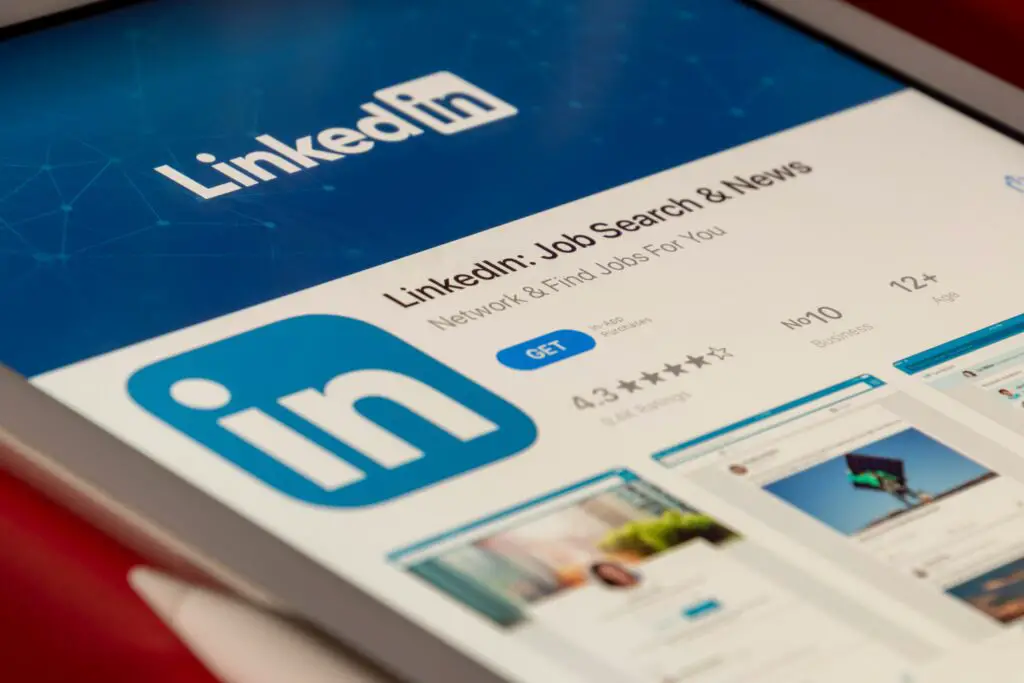
LinkedIn is a professional networking platform designed for career-oriented individuals and businesses. Here’s why content creators might consider LinkedIn for audience building:
B2B Opportunities: LinkedIn is particularly useful for content creators targeting a business-to-business (B2B) audience. If your content revolves around professional development, entrepreneurship, leadership, or industry-specific insights, LinkedIn provides a platform where you can share your expertise and attract like-minded professionals and potential clients.
Thought Leadership: LinkedIn offers content creators the opportunity to establish themselves as thought leaders in their respective industries. By sharing valuable insights, industry trends, and thought-provoking articles, you can build credibility, expand your network, and attract a professional audience that values expertise and industry knowledge.
Professional Networking: LinkedIn’s focus on professional connections enables content creators to network with individuals who can offer collaborations, partnerships, or career opportunities. By actively participating in LinkedIn Groups, joining relevant industry discussions, and engaging with professionals in your field, you can expand your reach and establish valuable connections.
Some Relevant Data Points:
- LinkedIn has over 740 million members, with professionals from various industries.
- LinkedIn is responsible for more than 80% of B2B social media leads.
- Articles published on LinkedIn receive an average of 9 billion impressions per week.
- LinkedIn is the most trusted social media platform in terms of content and information.
Why You Shouldn’t Use LinkedIn
Using LinkedIn as a platform to grow your online audience and drive traffic to your website can have its benefits, but it also has certain drawbacks and cons to consider. Here are some potential drawbacks of using LinkedIn for audience growth:
Professional Focus: LinkedIn is primarily a professional networking platform, with a strong emphasis on business-related content and connections. If your blog content is more casual or doesn’t directly align with professional or career-related topics, it may be challenging to find a suitable audience on LinkedIn. The platform’s user base tends to have a specific professional mindset, so content that doesn’t cater to that may have limited reach.
Limited Organic Reach: Similar to other social media platforms, LinkedIn’s algorithm determines the visibility of your posts. While LinkedIn aims to prioritize relevant and engaging content, organic reach can be limited, especially for newer or smaller accounts. Building an organic audience and driving traffic to your website may require consistent and high-quality content, active engagement, and strategic use of relevant hashtags.
B2B Emphasis: LinkedIn is known for its strong business-to-business (B2B) focus, making it ideal for professionals, entrepreneurs, and businesses targeting a professional audience. If your blog content is more consumer-oriented or doesn’t directly cater to B2B topics, you may face challenges in finding a suitable audience and driving traffic to your website. Understanding your target audience and their professional interests is crucial for effective audience growth on LinkedIn.
Limited Content Formats: LinkedIn primarily supports text-based posts, articles, and links to external content. While there is an option to share images and videos, the platform’s emphasis is on written content and professional discussions. If your blog relies heavily on visual or interactive content, such as infographics or interactive media, it may be challenging to present your content in a format that aligns well with LinkedIn’s offerings.
Professional Etiquette and Tone: LinkedIn users expect a certain level of professionalism and etiquette in the content they engage with. If your blogging style is more informal or casual, you may need to adapt your tone to fit the platform’s professional context. Finding the right balance between showcasing your expertise and engaging with your audience authentically can be crucial for success on LinkedIn.
Limited Personal Branding: While LinkedIn allows you to build a professional brand and showcase your expertise, the platform’s focus is primarily on individuals rather than personal brands or blogs. While you can include links to your website and share blog content, the overall presence and discoverability of individual bloggers may be somewhat limited compared to other platforms that are more blog-centric.
LinkedIn remains a valuable platform for networking, establishing professional credibility, and connecting with industry peers. By focusing on professional topics, engaging in relevant discussions, sharing insightful content, and leveraging LinkedIn’s features such as publishing articles and participating in relevant groups, you can grow your online audience and drive targeted traffic to your website.
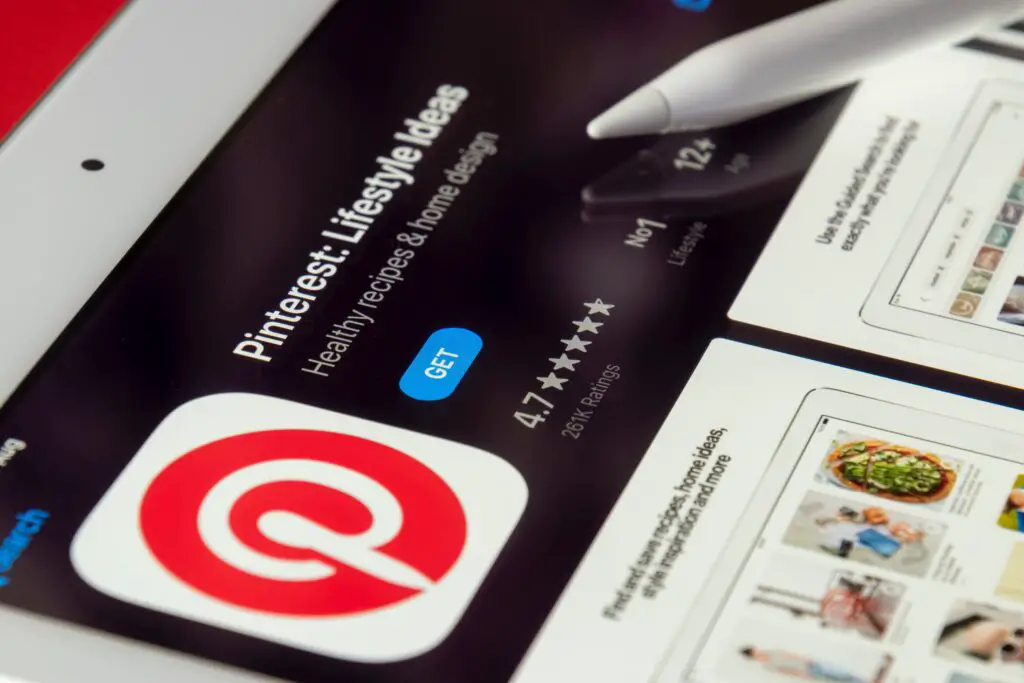
Pinterest is a visual discovery platform that allows users to find and save ideas for various topics. Here’s why content creators might choose Pinterest for audience building:
Searchable Content: Pinterest functions as a search engine, making it a valuable platform for content creators in fields such as home decor, fashion, DIY, recipes, and travel. By optimizing your content with relevant keywords and utilizing high-quality visuals, you can increase the discoverability of your pins and attract an audience actively searching for inspiration and ideas.
Evergreen Content Promotion: Unlike other platforms where content has a shorter lifespan, Pinterest pins can generate consistent traffic over time. By creating visually appealing pins and leveraging SEO strategies, you can ensure that your content continues to gain visibility and attract new users even months after its initial publication.
Audience Intent: Users on Pinterest have a high intent to take action. They are actively seeking ideas, solutions, and inspiration for their projects or interests. This provides content creators with an engaged audience that is more likely to click through, explore, and interact with the content they discover on Pinterest.
Some Relevant Data Points:
- Pinterest has over 460 million monthly active users, with a majority being female users.
- 85% of Pinterest users say they use the platform to plan purchases.
- Pinterest drives more referral traffic than Twitter, Reddit, and LinkedIn combined.
- Users are 2.6 times more likely to make a purchase based on a recommendation on Pinterest compared to other platforms.
Why You Shouldn’t Use Pinterest
Using Pinterest as a platform to grow your online audience and drive traffic to your website can be advantageous, but it also has certain drawbacks and cons to consider. Here are some potential drawbacks of using Pinterest for audience growth:
Visual Emphasis: Pinterest is a highly visual platform that revolves around images and graphics. If your blog content is not inherently visual or doesn’t lend itself easily to visual representation, it can be challenging to create compelling and engaging pins. Transforming your blog content into visually appealing graphics or finding suitable visual representations can require additional effort and creativity.
Time-Intensive Content Creation: Pinterest thrives on fresh and visually attractive content. To maximize your visibility and reach, you’ll need to regularly create and upload new pins. This can be time-consuming, especially if you’re already investing significant effort in producing blog content. Consistency in creating high-quality pins is crucial for building an audience on Pinterest.
Long-Term Investment: Unlike platforms such as Twitter or Facebook, where posts have a short lifespan, Pinterest pins can have a longer shelf life. However, it often takes time for pins to gain traction and start driving significant traffic to your website. Building an audience on Pinterest requires patience and a long-term investment in consistently creating and sharing pins over time.
Limited Social Interaction: While Pinterest allows for some social interaction through comments and messaging, it’s not primarily a platform for extensive social engagement. Users on Pinterest are more focused on discovering and saving ideas rather than engaging in conversations or discussions. Building a community or fostering direct engagement with your audience can be more challenging compared to other social media platforms.
Algorithm and Discoverability: Pinterest’s algorithm plays a crucial role in determining the visibility and success of your pins. Understanding the algorithm and optimizing your pins for searchability and relevancy is essential for driving traffic to your website. However, the specific details of Pinterest’s algorithm are not publicly disclosed, making it challenging to fully grasp and master its intricacies.
Demographic Limitations: Pinterest’s user base tends to skew more towards certain demographics, such as women and specific age groups. Depending on your target audience and blog niche, you may find that Pinterest’s user demographics may not align perfectly with your intended audience. It’s important to assess whether your target audience actively uses Pinterest and whether it’s an effective platform for reaching them.
Pinterest remains a valuable platform for driving traffic to websites and blogs, particularly for visually-oriented niches. By creating visually appealing and optimized pins, utilizing relevant keywords and descriptions, leveraging group boards, and actively engaging with the Pinterest community, you can successfully grow your online audience and drive traffic to your website through Pinterest.
In Conclusion
Selecting the right social media platform to build your audience as a content creator is a crucial decision. By understanding the unique advantages and drawbacks of each platform, you can tailor your strategy to effectively engage with your target audience and achieve your goals. Consider the nature of your content, your industry, and your target demographic to make an informed choice.
In digital marketing, strategies almost never stay the same. The world of SEO, content creation, audience building, site monetization, and social media all move at breakneck speeds. A google algorithm update, a seasonal downturn, even a technical site issue can all dramatically affect your position virtually overnight.
Remember, it’s not necessary to limit yourself to a single platform. Many content creators find success by utilizing a combination of platforms to reach a wider audience and diversify their online presence. Continually evaluate and adapt your social media strategy based on audience feedback, engagement metrics, and emerging trends to maximize your reach and impact as a content creator.

Anthony Moore is a writer, speaker, and coach. He's helped hundreds of entrepreneurs create successful businesses, and has gained over 7 million views for his work on entrepreneurship, personal growth, and productivity.
Featured Content
Checkout this popular and trending content

Ranking In Universal Search Results: Video Is The Secret
See how Flickify can become the ultimate SEO hack for sites missing out on rankings because of a lack of video.
Announcement

Ezoic Edge: The Fastest Way To Load Pages. Period.
Ezoic announces an industry-first edge content delivery network for websites and creators; bringing the fastest pages on the web to Ezoic publishers.
Launch

Ezoic Unveils New Enterprise Program: Empowering Creators to Scale and Succeed
Ezoic recently announced a higher level designed for publishers that have reached that ultimate stage of growth. See what it means for Ezoic users.
Announcement
